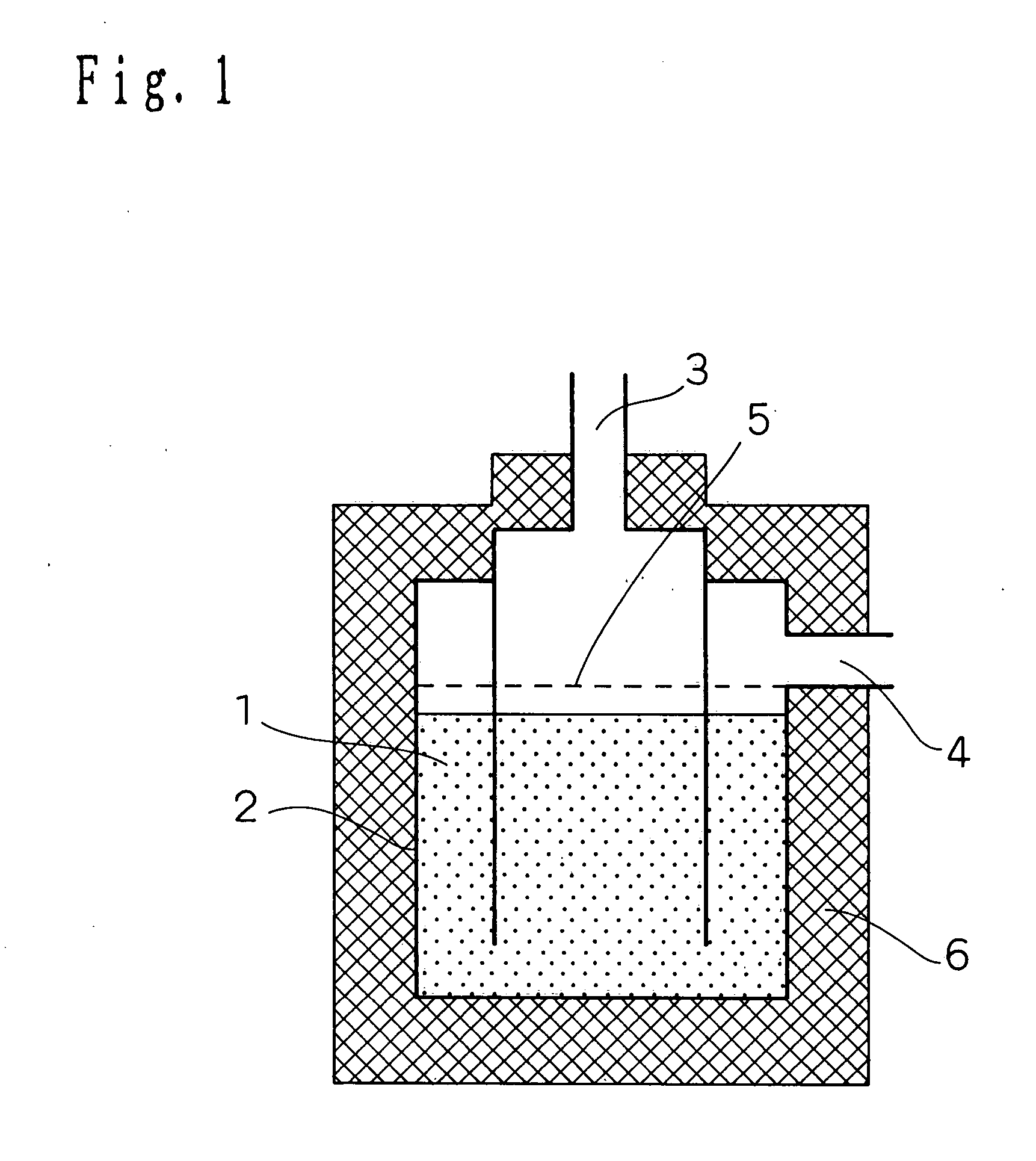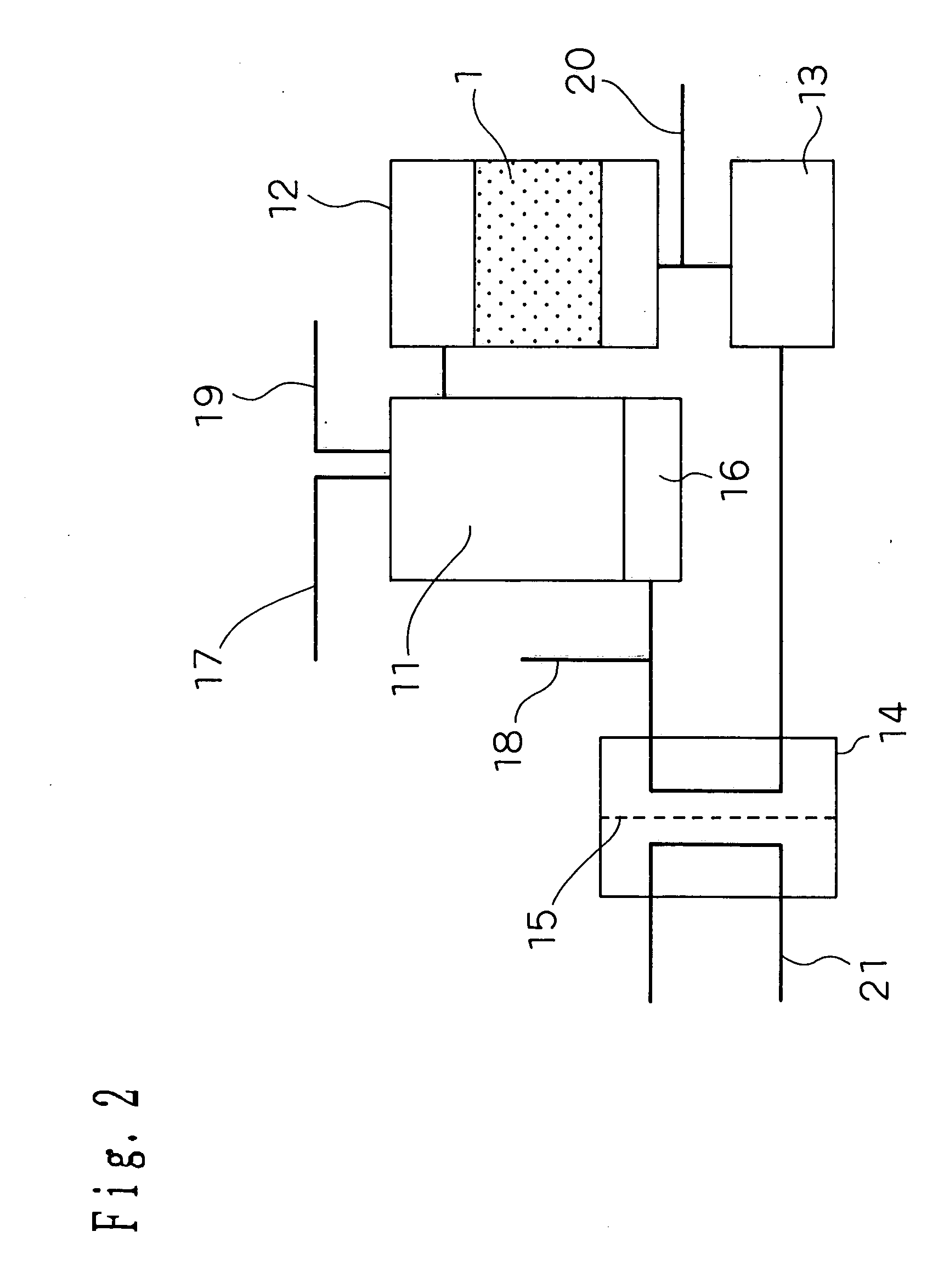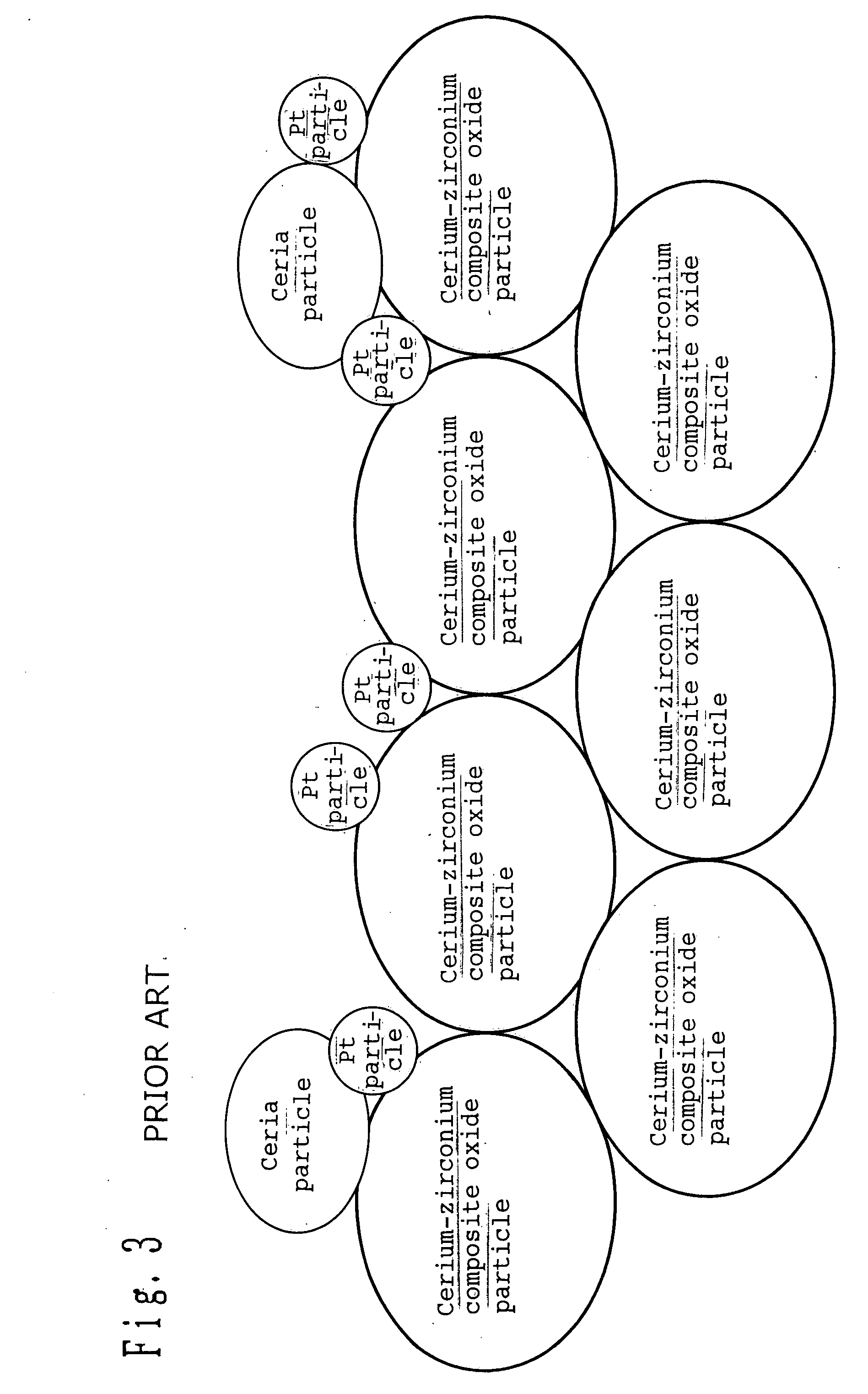CO removal catalyst, method of producing CO removal catalyst, hydrogen purifying device and fuel cell system
a technology of co removal catalyst and catalyst, which is applied in the direction of physical/chemical process catalyst, bulk chemical production, sustainable manufacturing/processing, etc., can solve the problems of consuming a large amount of hydrogen, and reducing the efficiency of the entire devi
- Summary
- Abstract
- Description
- Claims
- Application Information
AI Technical Summary
Benefits of technology
Problems solved by technology
Method used
Image
Examples
embodiment 1
[0100] (Embodiment 1)
[0101] Firstly, the configuration of a hydrogen purifying device according to the present embodiment of implementation of the invention will be described in connection with FIG. 1. FIG. 1 is a schematic longitudinal sectional view illustrating the configuration of a hydrogen purifying device according to an embodiment 1 of implementation of the invention.
[0102] In FIG. 1, the reference numeral 1 indicates a CO removal catalyst (hereinafter simply referred to as "catalyst") which is provided inside a reactor 2. The reference numeral 3 indicates a modified gas inlet through which a modified gas is introduced. The modified gas which has been reacted is then discharged from a modified gas outlet 4.
[0103] Provided upstream the catalyst 1 is a diffuser plate 5 so that the modified gas can flow uniformly. In order to keep the reactor at a constant temperature, the periphery of the reactor is covered by an insulating material 6 made of ceramic wool at necessary areas.
[0...
embodiment 2
[0138] (Embodiment 2)
[0139] An embodiment 2 of implementation of the invention will be described hereinafter. FIG. 2 is a schematic diagram illustrating the structure of a fuel cell system according to the embodiment 2 of implementation of the invention. As shown in FIG. 2, the hydrogen purifying device according to the embodiment 1 of implementation of the invention is incorporated in the fuel cell system as CO modifying portion 12.
[0140] In FIG. 2, the reference numeral 11 indicates a modifying portion, the reference numeral 12 indicates a CO modifying portion corresponding to the hydrogen purifying device of the invention, the reference numeral 13 indicates a CO purifying portion, the reference numeral 14 indicates a fuel cell portion, and the reference numeral 15 indicates a protonically-conductive solid polymer electrolyte membrane.
[0141] There are provided a heating portion 16 of heating the modifying portion, a starting material supplying portion 17 of supplying a starting ma...
example
Example 1
[0151] Cerium and zirconium nitrate were each dissolved in purified water. The two aqueous solutions were then mixed at a ratio of 1:1 by weight as calculated in terms of CeO.sub.2 and ZrO.sub.2. Subsequently, the mixture was subjected to ordinary coprecipitation to prepare a precipitate which was then calcined at 500.degree. C. in the air atmosphere to obtain a ceria-zirconia composite oxide powder. The ceria-zirconia composite oxide powder thus obtained was then measured for BET specific surface area by nitrogen adsorption method, which is normally conducted. The result was 105 m.sup.2 per gram.
[0152] The powder was then subjected to structural analysis by powder X-ray diffractometry. No diffraction line attributed to single phase of ceria and zirconia was observed. It was thus confirmed that a uniform solid solution had been formed.
[0153] To the ceria-zirconia composite oxide thus obtained were then added a zirconia binder and a small amount of purified water such that t...
PUM
| Property | Measurement | Unit |
|---|---|---|
| particle diameter | aaaaa | aaaaa |
| particle diameter | aaaaa | aaaaa |
| particle diameter | aaaaa | aaaaa |
Abstract
Description
Claims
Application Information
 Login to View More
Login to View More - R&D
- Intellectual Property
- Life Sciences
- Materials
- Tech Scout
- Unparalleled Data Quality
- Higher Quality Content
- 60% Fewer Hallucinations
Browse by: Latest US Patents, China's latest patents, Technical Efficacy Thesaurus, Application Domain, Technology Topic, Popular Technical Reports.
© 2025 PatSnap. All rights reserved.Legal|Privacy policy|Modern Slavery Act Transparency Statement|Sitemap|About US| Contact US: help@patsnap.com



